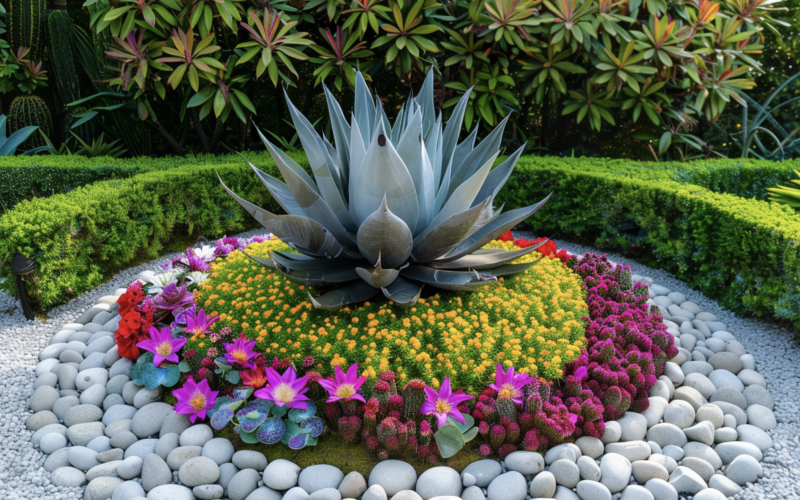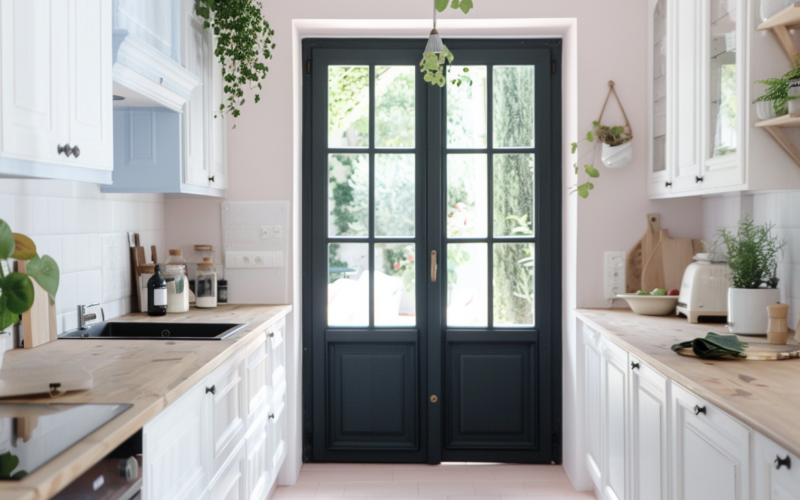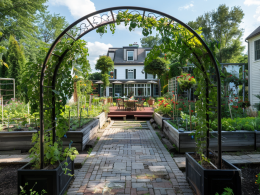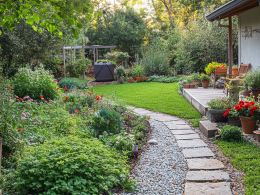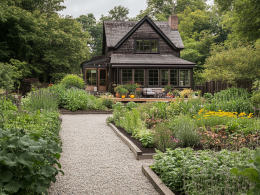Maintaining a neat garden can be a challenge. We all want our outdoor spaces to look tidy, but keeping plants in check and lawns from overgrowing can be time-consuming. That’s where edging comes in.
Professional landscapers know that the right edging materials can make a huge difference in creating low-maintenance garden border ideas that look great year-round.
I’ll show you the top edging materials pros prefer for easy upkeep and lasting appeal. This post will explore options like metal, stone, and brick that can transform your garden borders.
You’ll learn why these materials stand out and how they can help you achieve a polished look with minimal effort. Let’s dive into the world of professional-grade edging solutions!
Top Edging Materials Preferred by Professionals
1. Metal Edging
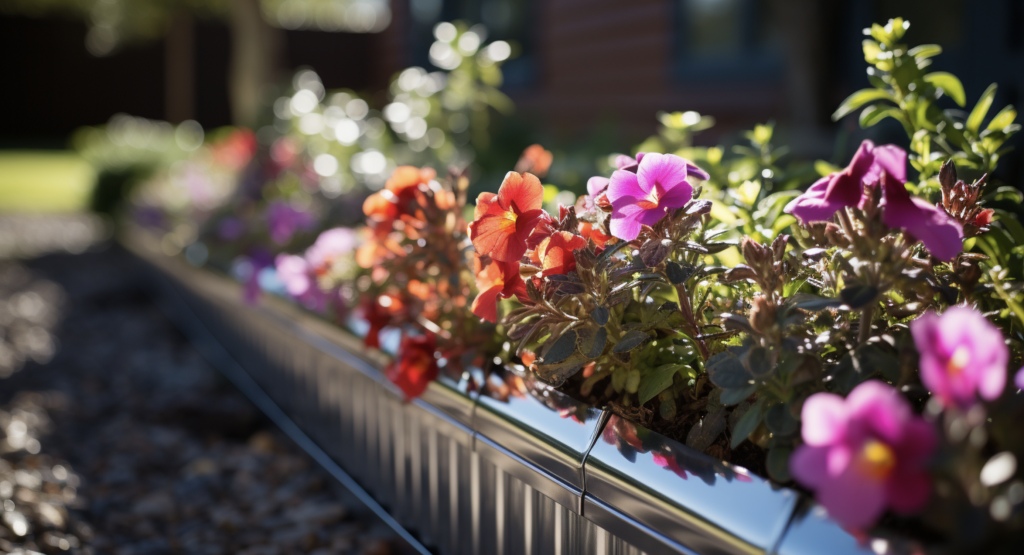
Aluminum and steel are top picks for metal edging. Why?
They’re tough as nails and don’t need much fussing over. Plus, they give your garden that sleek, clean look that’s hard to beat.
I’ve found that metal edging is perfect for making straight lines or gentle curves. It’s like drawing an ideal outline around your flowerbeds.
But here’s a tip: keep an eye on it now and then. If the weather has been rough, you might need to give it a fresh coat of paint or seal it up.
2. Brick, Stone, and Concrete Edging
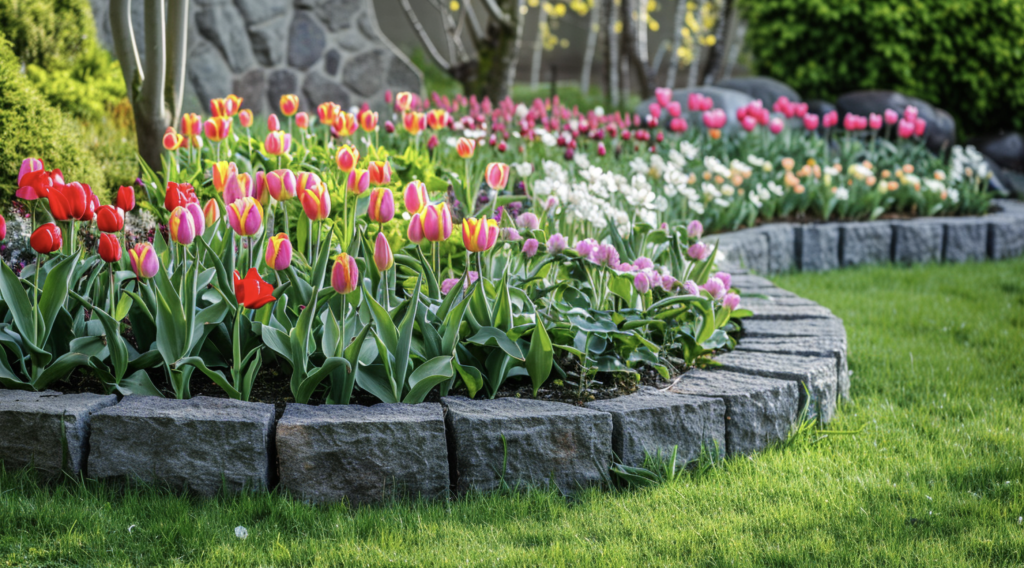
Now, if you want options, these materials are your best friends. They come in all shapes and sizes so that you can get creative.
Brick and stone have that classic charm that never goes out of style. I love how they can make a garden look established and elegant.
Concrete, on the other hand, gives off a more modern vibe. It’s great if you’re going for a sleek, up-to-date look.
The best part? These materials can withstand sun and rain without breaking a sweat. But don’t forget—they might need a little TLC now and then. A bit of resealing or patching can keep them looking fresh for years.
3. Wood Edging
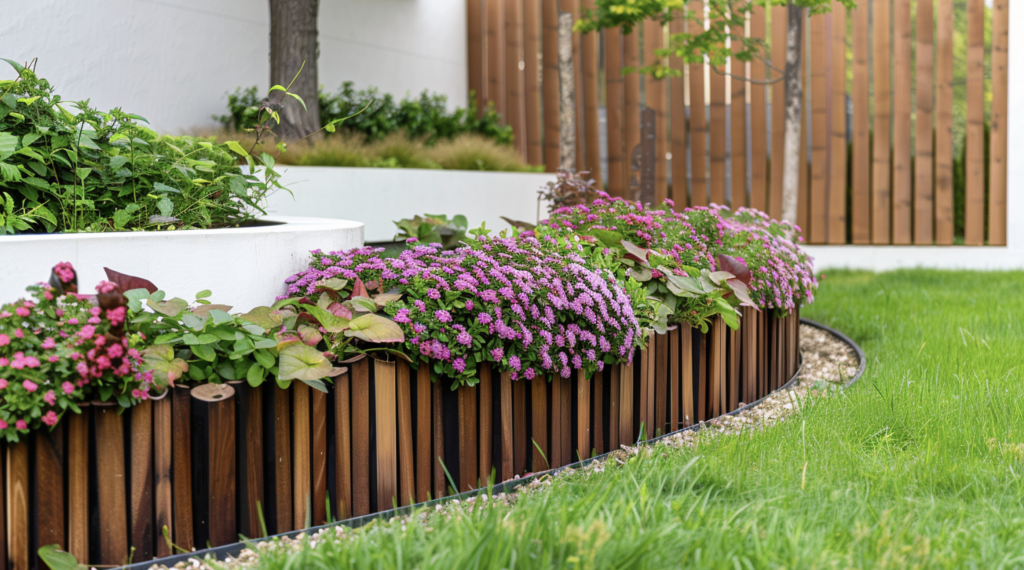
Wood brings a warm, natural feel to your garden. Treated lumber is sturdy and can last for years if properly maintained.
But let me tell you about redwood bender boards—my secret weapon for creating smooth curves. These thin strips of wood are so flexible that you can make them dance around your flower beds!
I remember using untreated wood once in a client’s garden—a big mistake! Within a year, it looked shabby and started to rot.
That’s why I always stress using treated wood now. It might cost a bit more upfront, but it saves you headaches.
4. Plastic Edging
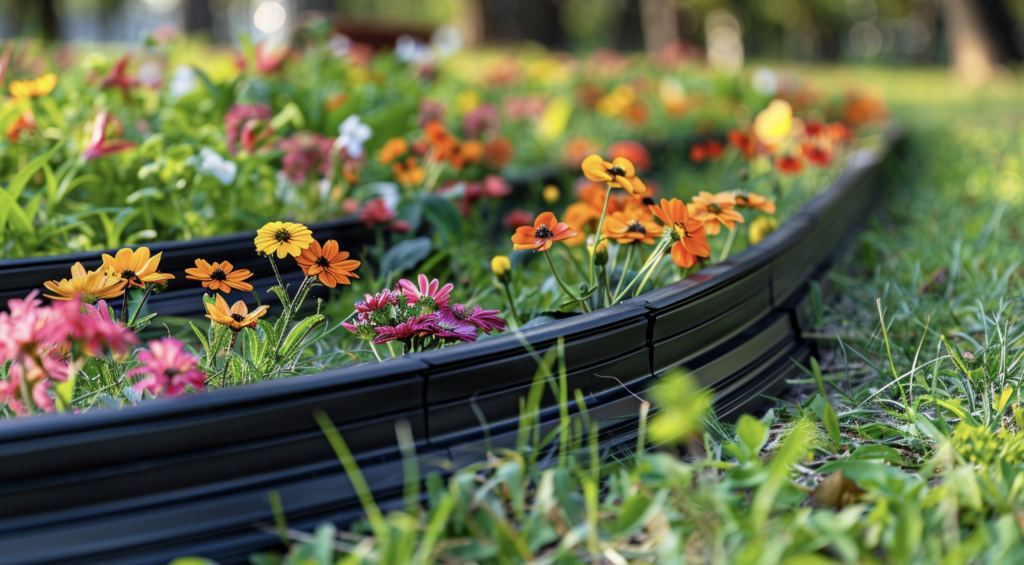
Plastic edging is versatile and handy, like the Swiss Army knife for garden borders.
It’s so light that you can practically install it with one hand tied behind your back. And if you’re watching your wallet, plastic won’t make it cry.
But here’s the thing – plastic isn’t invincible. It gets a bit floppy after a few seasons, especially in areas with extreme temperatures.
And if you accidentally hit it with the lawnmower? Well, let’s say it might not survive the encounter.
Still, plastic can be a great choice for a quick garden makeover or if you like changing your layout often.
5. Natural Rock Edging
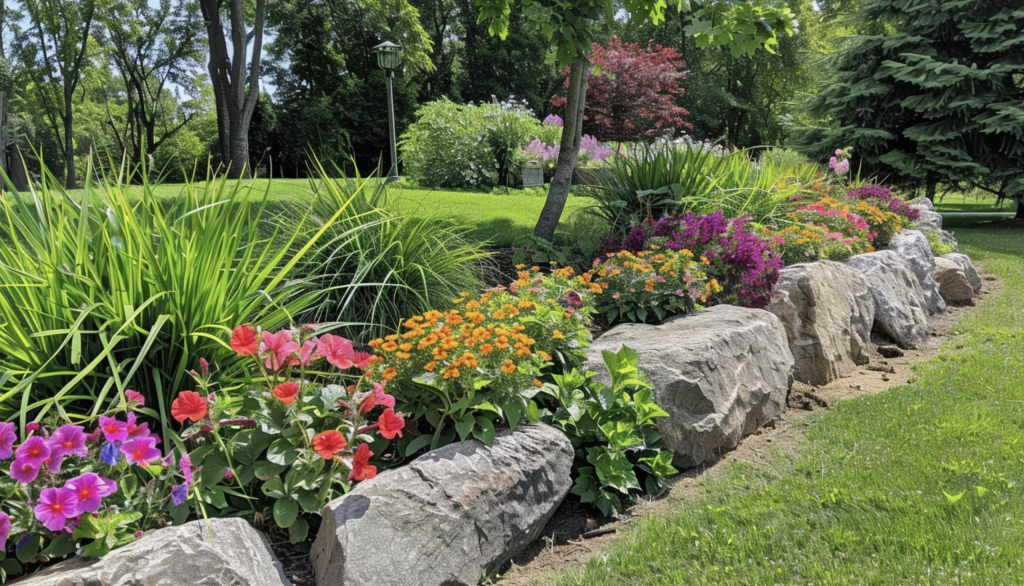
There’s something magical about using rocks in your garden. They look like they’ve always been there, blending seamlessly with nature.
One of the coolest things about rock edging is how it handles water. Instead of creating a dam, it acts more like a natural filter, letting water seep slowly.
I once used rock edging in a sloped garden, and it was a game-changer. Not only did it look fantastic, but it also stopped the soil from washing away every time it rained.
And talk about low maintenance—once those rocks are in place, they’re not going anywhere!
Factors to Consider When Choosing Edging Material
Design Elements
Your edging should complement your home and existing landscape. I always tell folks to look at the big picture. If you’ve got a modern house, sleek metal edging might work best. Natural stone could be perfect for a cottage-style home.
Here’s a neat trick: use contrast. Try brick edging to create a clear border if your lawn is soft and green. It’s like drawing a line around your flowerbeds—it makes them stand out!
Cost Comparison
It’s tempting to go cheap, but that’s not always smart. I once used budget plastic edging for a client, and we had to replace it after just one season. Ouch!
Think of edging as an investment. Sometimes, spending more upfront saves money later. But don’t worry – there are good options for every budget. It’s all about finding that balance between cost and quality.
Durability
Your edging needs to withstand sun, rain, snow—you name it. When choosing, consider your local weather. In harsh winters, metal or stone might work better than wood. In sunny spots, look for materials that won’t fade or crack.
Remember, the most durable option isn’t always the best fit. It depends on your garden and how often you like to change things up.
Conclusion
Let’s wrap this up! Picking the right edging material can greatly affect your garden’s look and upkeep.
We’ve explored what the pros prefer, from durable metal to classic brick and stone. We’ve also looked at wood, plastic, and natural rock options, each with strengths.
Remember, the best choice depends on your specific needs. Think about how it fits your garden’s style, your budget, and how much time you want to spend on maintenance.
Now it’s your turn to get creative! Why not try out some of these edging ideas in your garden? You might be surprised how a simple border transforms your outdoor space.
Frequently Asked Questions
What’s the Most Budget-Friendly Edging Option?
Plastic edging is usually the cheapest option. It’s easy to find and install. However, it may need replacing sooner than other materials, so factor that into your long-term costs.
How Often Should I Replace My Garden Edging?
The frequency of replacement depends on the material. Plastic might need replacing every 2-5 years, while stone, brick, or metal can last 10-20 years with good care.
Can I Install Garden Edging Myself?
Yes, you can install most types of garden edging yourself. Simple options like plastic or metal strips are the easiest. For brick or stone, you might need some basic DIY skills.





